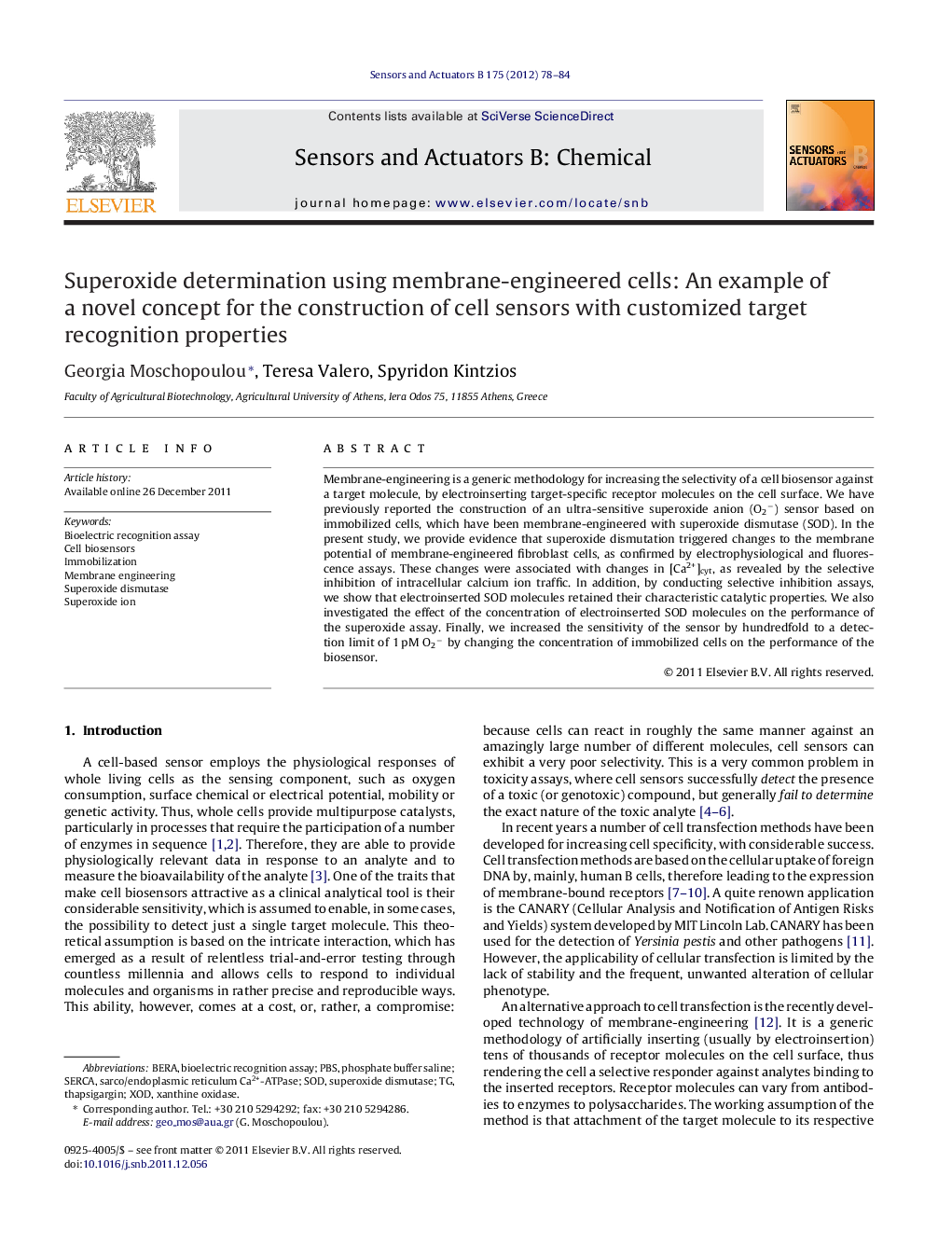| Article ID | Journal | Published Year | Pages | File Type |
|---|---|---|---|---|
| 740549 | Sensors and Actuators B: Chemical | 2012 | 7 Pages |
Membrane-engineering is a generic methodology for increasing the selectivity of a cell biosensor against a target molecule, by electroinserting target-specific receptor molecules on the cell surface. We have previously reported the construction of an ultra-sensitive superoxide anion (O2−) sensor based on immobilized cells, which have been membrane-engineered with superoxide dismutase (SOD). In the present study, we provide evidence that superoxide dismutation triggered changes to the membrane potential of membrane-engineered fibroblast cells, as confirmed by electrophysiological and fluorescence assays. These changes were associated with changes in [Ca2+]cyt, as revealed by the selective inhibition of intracellular calcium ion traffic. In addition, by conducting selective inhibition assays, we show that electroinserted SOD molecules retained their characteristic catalytic properties. We also investigated the effect of the concentration of electroinserted SOD molecules on the performance of the superoxide assay. Finally, we increased the sensitivity of the sensor by hundredfold to a detection limit of 1 pM O2− by changing the concentration of immobilized cells on the performance of the biosensor.
